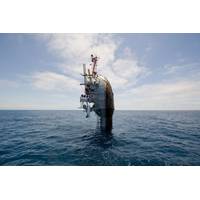
US Navy-owned FLIP Research Platform Retired from Service
costs resulted in the platform being disestablished.On Aug. 3, a solemn gathering of well-wishers watched as FLIP was towed, at sunset, to a dismantling and recycling facility. Last month, a formal good-bye ceremony was hosted by the Marine Physical Laboratory at the University of California, San Diego (UCSD).Still, FLIP — which was owned by the U.S. Navy and managed by Scripps Institution of Oceanography at UCSD — boasts a proud legacy and represents a golden age of oceanography that saw a renewed focus on ocean exploration, the creation of new fields of study, and greater public appreciation
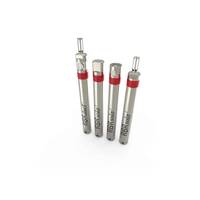
Lander Lab 8: Titanium and Ocean Landers
to porosity and lack of grain structure found in wrought material.Acknowledgements: The author gratefully acknowledges the contributions of Michael May, Decisive Testing; Mike Gomper (Clint Precision Manufacturing); Reed Jackson (RJ Machine); Rob Klidy, Manager, Scripps Institution of Oceanography/UCSD Machine Shop, Stephen Dexter “Handbook of Oceanographic Engineering Materials”; R. Frank Busby “Manned Submersibles”
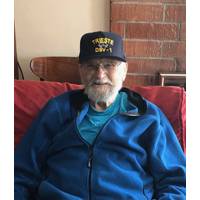
In Memoriam: E. John Michel, MRCM (DV) USN (Ret), Chief-of-the-Boat, Bathyscaph Trieste
to younger crew: demonstrating a commitment to high standards, the willingness to accept extraordinary challenges, and core belief he had the right stuff to solve the most seemingly complex problems, then move them into the “done” column.By Kevin Hardy, Scripps Institution of Oceanography/UCSD (Ret)In lieu of flowers, John’s family requests donations be made to the U.S. Navy Divers Memorial at Miramar National Cemetery, San Diego.A Celebration of Life is planned for February 19 in San Diego. Details to follow. For further information, CLICK HERE or contact Mark Michel

Lander Lab #5: Lithium Polymer Batteries
important task. ($19, at Tenergy Power)UNOLS on Shipboard LiPo safetyFour University-National Oceanographic Laboratory System (UNOLS), WHOI and USN documents maybe found at https://www.unols.org/documents/batteries.Scripps Institution of Oceanography has a similar document at https://scripps.ucsd.edu/sites/scripps.ucsd.edu/files/basic-page-ships/field_attachment/2015/SIO.ShipboardLithiumBatteryGuidelines.Nov-2014.pdfShipping:IATA UN 38.3 restrictions apply. Good tip: Do not modify the LiPo batteries in anyway, and the UN 38.3 test certification document the manufacturer used to ship them to
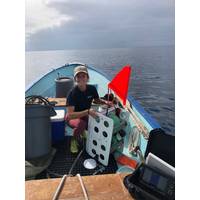
Lander Lab #2: Small Autonomous Landers for Studying the Community Ecology of Nearshore Submarine Canyons
Lander Lab will routinely feature field work by researchers from around the world using ocean landers. We begin with the 2021 Scripps Institution of Oceanography/UCSD work of Ashley Nicoll, currently a PhD student at Stony Brook University, Stony Brook, Long Island, New York. Click here to see Ashley’s full Master’s Thesis paper, “Nicoll Thesis 2021.pdf”.Nearshore submarine canyons are unique features that bring the deep sea close to shore, potentially functioning as highways connecting shallow and deep-sea ecosystems. To study their ecology, we adapted two

Hacking 4 Environment: Oceans - Creating Entrepreneurs from Scientists and Students
The University of California Santa Cruz (UCSC) and the University of California San Diego (UCSD) recently completed a first-of-its-kind course that had student teams working to develop creative solutions to complex challenges facing our oceans – and the results are a reminder of the value in trying new approaches.In the 10-week classes, held over spring quarter, 50 students grouped into teams of four used agile entrepreneurial approaches (Lean Startup method and Problem Curation techniques) to address an ocean-related problem that could use a new solution.Student teams experienced what it is

Coast Guard, Scripps Launch Blue Technology Center of Expertise
. Coast Guard and Scripps Institution of Oceanography at the University of California San Diego will launch the Blue Technology Center of Expertise (COE) on the Scripps Oceanography campus with a ribbon-cutting ceremony and expo in San Diego, Friday.Rep. John Garamendi, Rep. Scott Peters, Rep. Mike Levin, UCSD Chancellor Pradeep Khosla, Port of San Diego Commissioner Marshall Merrifield, Coast Guard Deputy Commandant for Mission Support, Vice Adm. Michael F. McAllister, and the 11th Coast Guard District Commander, Rear Adm. Peter W. Gautier, are scheduled to speak at the event to celebrate the partnership
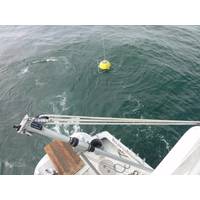
Datawell Wave Buoy Supports NASA Beach Stability Study
, N.C.). It was deployed and is maintained by the U.S. Army Corps of Engineers Field Research Facility (Duck, N.C.). Data management is provided by the Scripps Coastal Data Information Program (La Jolla, Calif.). Real-time data are available from several sources including frf.usace.army.mil, cdip.ucsd.edu, or ndbc.noaa.gov
Halls of Higher Learning
MTR100 was no easy feat, but our U.K.-based contributor Kira Coley, as always, gave it her best shot. Scripps Institution of Oceanography - UC San Diego Topic: Education & Outreach No. of employees: 2,238 Address: 9500 Gilman Drive, La Jolla, CA 92093 Tel: 858-534-3624 Email: [email protected] www.scripps.ucsd.edu Since 1903, Scripps Institution of Oceanography at UC San Diego has evolved into one of the world’s most influential centers for marine biology, ocean, atmospheric and earth research. The award-winning institution and culture of collaboration spark innovation



 February 2024
February 2024





